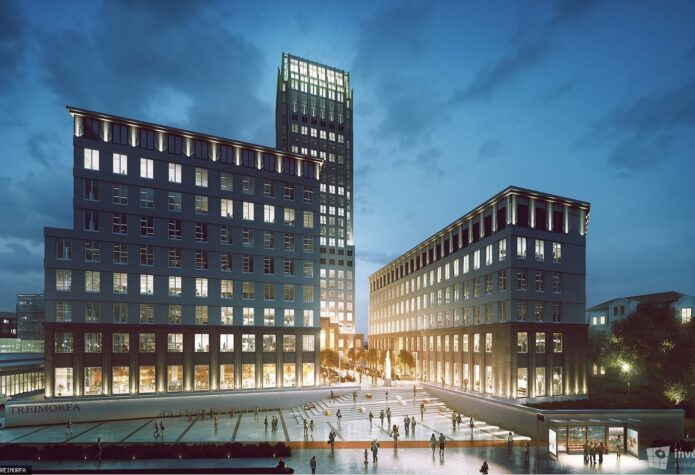Skanska: making the most of smart and green

Image: Skanska Property Poland
Buildings account for almost 40% of all CO2 emissions in the EU. Swedish construction company Skanska AB is developing properties that are resource-efficient and emit little or no carbon dioxide. Five major building projects in Poland are now being financed with the proceeds of NIB Environmental Bonds.
Skanska is a global construction and project development group, and a market leader in energy-efficient buildings.
In June 2017, Skanska and NIB signed a loan agreement of USD 100 million, financed in full with the proceeds of NIB Environmental Bonds, for the construction of five “green” office complexes in Poland, four in Warsaw and one in Wrocław.
Adam Targowski, Sustainability Manager at Skanska Commercial Development Europe, explains the strategy behind the company’s environmentally-friendly construction practice.
“Most people are not aware of the strain the building sector is putting on the planet. Homes, offices and public infrastructure significantly affect the environment”, says Mr Targowski. “The good thing is that we know how to make a difference.”
“Green buildings are properties that, in their construction and operation, reduce negative impacts on the climate and environment”, he explains. “They are designed to preserve natural resources through the sustainable use of materials, energy and water, but also create healthier indoor environments for tenants.”
“A lot of work goes into the buildings’ design phase, so we are able to predict and minimize the facilities’ energy consumption.”
“The five projects we are financing with NIB in Poland will consume 25% less energy and 35% less water than similar office complexes do. Also, they will be located close to public transport hubs – an important feature in green offices.”
When completed, the new facilities in Warsaw and Wrocław will be certified Platinum, the highest level under the LEED rating systems for environmental buildings.
The way forward
Estimations published by the European Commission suggest that by improving the energy efficiency of buildings, the total energy consumption in the EU could be reduced by 5-6%, and emissions could be lowered by about 5%.
Mr Targowski believes that technology is no longer a barrier to achieving this goal.
“Significantly more sustainable buildings are not a vision of the future. Already today we have the knowledge and skills needed for their construction.”
“Developing green properties and promoting sustainable building standards is the only way forward. Our buildings will serve users and communities for many years to come, and since we use natural resources, we feel obliged to use them wisely to ensure the best possible outcome.”
Future investments
“Investments in sustainable building practice in premium locations like Warsaw and Wrocław not only have a high reference value, they also provide tenants with a design that supports the health, well-being and productivity of the occupants,” says Mr Targowski.
“Companies want workplaces that are environmentally friendly and beneficial to createing a good working environment, and investors want to invest in products with future-proof value.”
“In addition, we are clearly seeing an increase in the environmental demands financial institutions are placing on projects, similar to what NIB is doing,” Mr Targowski says.
“We are glad to see that it’s not only money that matters on capital markets. A shared perspective on the future, looking beyond the here and now, and considering the next generations – this is driving business in the direction we ourselves want to go.”